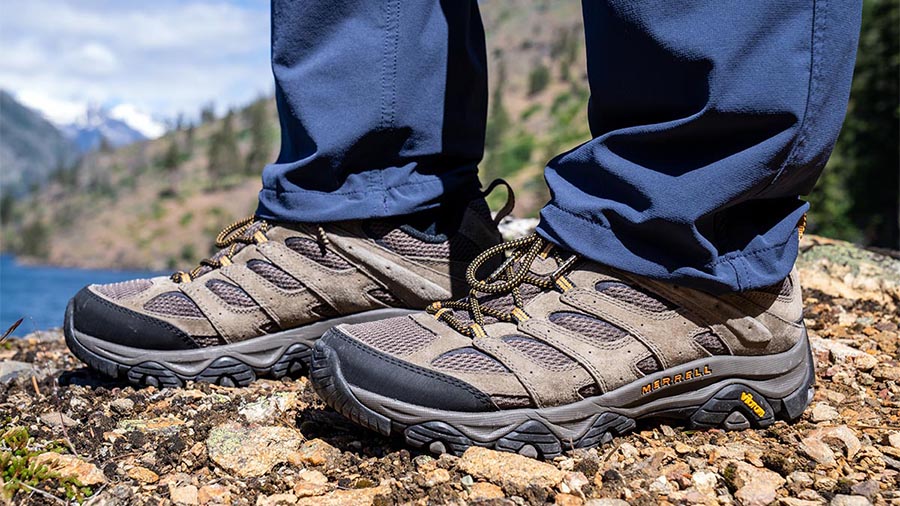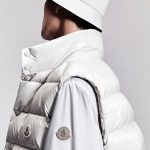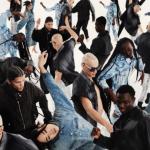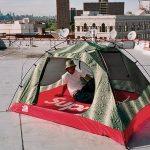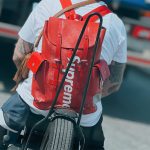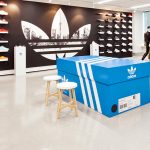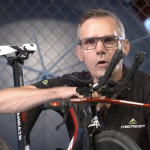Wolverine Worldwide delivered operating margins ahead of expectations and EPS at the high-end of the guidance, but revenue in the quarter came in softer than expected, and guidance for the full year was reduced on expectations that the marketplace would become increasingly promotional in the back half.
Positives in the quarter included the growth of 14 percent for Merrell and 16 percent for the Wolverine brand as sales for Saucony, Sperry and Sweaty Betty missed plan.
On a call with analysts, Brendan Hoffman, president and CEO, said overall sales in the quarter were impacted by “unplanned headwinds” related to elevated wholesale channel inventory, foreign exchange rate pressures and some lingering supply chain delays. “As a result of these headwinds, which are likely to persist through the back half of the year, we are revising our guidance to reflect higher promotional activity and challenges related to moving inventory through our wholesale channels,” said Hoffman. “While we are reducing our margin outlook for the second half, we are taking actions to reduce costs, increase efficiencies in marketing spend, and take strategic price increases, all of which will contribute to improved longer-term profit,” he continued.
In the quarter ended July 2, revenue advanced 12.9 percent to $713.6 million, below Wall Street’s consensus estimate of $737.4 million. Sales were up 25.5 percent versus the pre-pandemic 2019 quarter.
Excluding Sweaty Betty, revenue was $666.2 million, up 5 percent and ahead 17.2 percent compared to 2019.
Notable strength was in international, up 45.3 percent to $295.2 million, including Sweaty Betty, and up 26.4 percent to $256.8 million excluding Sweaty Betty. Sales in the U.S. declined 2 percent. Unfavorable foreign exchange rates impacted reported revenue growth by $19 million, or three percentage points.
Hoffman said two factors led to the revenue shortfall.
- Starting in June, Wolverine began to experience order postponements as certain U.S. retailers were faced with excess inventory at distribution centers and stores. Hoffman said, “We are working closely with partners to move through product and in some cases turning to drop shipping and direct the store shipments to help alleviate this current pressure.” Some of these sales are expected to shift to later in the year.
- Wolverine, like other brands, experienced softness in its e-commerce channel. E-commerce revenue was down 7 percent on an organic basis year-over-year, although up 20 percent, including Sweaty Betty. Hoffman said, “We believe this is largely attributable to a change in shopping behavior from what occurred during the pandemic with consumers now partially reverting back to in-store shopping and shifting towards experiential spending.”
Hoffman also believes it is having an impact on “certain consumer segments.”
With Wolverine operating a limited number of stores, excluding Sweaty Betty, and most being factory outlet locations, Hoffman said Wolverine has been unable to take full advantage of the spending shift from e-commerce to stores with its DTC channel. He added, “Our e-commerce remains critical to our growth story. Since 2019, the organic business has almost doubled, including Sweaty Betty, e-commerce, as a percentage of global sales is now approximately 20 percent.”
DTC revenue, including Sweaty Betty, was up 21.1 percent in the quarter to $166.2 million. Excluding Sweaty Betty, it was down 8.2 percent to $125.9 million.
On the positive side, Hoffman said Wolverine sees a normalization in production levels at its core factories. Transit times, which have been elevated and volatile, are also improving. Hoffman said, “Through our efforts earlier in the year, we were able to receive a majority of the fall inventory in time for the fall selling season.”
Merrell’s Sales Climb 14 Percent
Among its key brands, the highlight was Merrell, where sales rose 14.0 percent in the quarter year over year to $203.6 million, in line with expectations.
“Choppiness in the flow of goods in the U.S. retail during the quarter was partially mitigated by stronger than expected revenues from international markets,” said Hoffman. “As anticipated, lack of product newness was a headwind for Merrell in the quarter as supply chain delays pushed new product launches into Q3. Despite this challenge, the team has continued to generate excitement around the brand with marketing activations and sustainability initiatives launched during the quarter, which included ‘This Is Home,’ a new multiyear sustainability initiative designed to inspire consumers to protect the nature that shapes their everyday lives.”
To kick off the inaugural year, Merrell launched a take-back and resale program called Merrell ReTread, intended to keep 300,000 pairs of footwear out of landfills. Moab Step Further, Nature’s Calling and More Less marketing programs were also catalysts for continued strength and sell-through on core products, such as the Moab, Embark and Alpine.
For the third quarter, the Moab 3, shown lead image, an update to the number one light hiker in the market, was launched in July. Said Hoffman, “We’re very pleased with the early reads. Even as we promote Moab 2, Moab 3 is selling above expectations. Given the injection of new product, improving brand heat, continued growth in emerging performance styles like Moab Speed in-stock inventory levels, and easy comps versus last year’s supply chain disruptions, we expect Merrell to deliver over 30 percent revenue growth in the third quarter and full-year revenue growth in the high teens.”
The full-year growth outlook for Merrell is unchanged.
Saucony’s Sales Climb 7 Percent
Saucony’s sales improved 7.2 percent to $135.5 million but were slightly short of expectations primarily due to lower closeout sales related to excess inventory in the channel.
“We continue to see a strong response to newness,” said Hoffman. “In June, we launched Tempus, which marries the energy of a race shoe and an everyday trainer, and were encouraged by early sell-through.”
International grew 32 percent as distribution expands for Saucony. Hoffman said, “During Paris Fashion Week, Saucony took over a gallery in the Marais to showcase the House of Speed and House of Originals, bringing together performance and lifestyle segments of the brand. House of Speed celebrated the launch of the Endorphin Pro 3 and Endorphin Speed 3, the latest evolution of the brand’s award-winning endorphin collection, which launched in July. House of Originals focused on the rich heritage of speed and innovation and lifestyle elements of Saucony.”
Hoffman added, “Looking ahead, Saucony remains focused on driving market share globally across road and trail running categories and expanding our lifestyle Originals business. In Q3, we expect Saucony to deliver low single-digit revenue growth and mid-teens growth for the full year.” Previously, Wolverine expected Saucony to show high-teens growth.
Sperry’s Sales Decline 13 Percent
Sperry’s sales dropped 13.4 percent to $70.1 million, missing plan, as significant order postponements from retailers combined with isolated cancellations due to late arriving product. Hoffman said Sperry continues to work towards diversification in the wholesale channel while working closely with department store partners.
“Despite these challenges, our focus on innovation remains a priority,” he said. “A good example is the Sperry Sport, which exceeded our expectations. This line of highly innovative footwear uses lightweight, breathable materials, offering multipurpose solutions, including fishing, paddle boarding, boating, and sailing. When we introduce truly differentiated products that reflect the functional core of the brand, we see a very positive reaction from customers.”
Importantly, this category also extends Sperry’s customer reach to support “robust new consumer growth on sperry.com.” Additional product catalysts for Sperry for fall include expansion of the successful Torrent boot collection to the launch of the Duck Float Boot. Hoffman said Wolverine now expects Sperry revenue to grow mid-single digits in Q3 and deliver mid-single-digit growth for the full year. Previously, Wolverine expected Sperry to show low-teens growth.
Sweaty Betty’s Sales Decline On Europe Weakness
Sweaty Betty, acquired in August 2021, had sales of $47.4 million in the quarter, down 23 percent versus the prior year on a proforma basis and down 11 percent in constant currency. The brand had been expected to show mid-single-digit growth. Q2 revenue was up 96 percent versus 2019 on a proforma basis.
Hoffman said Sweaty Betty’s performance was impacted by continued macro headwinds in Europe and in the U.K. specifically. On the supply chain side, product delays continue to disrupt Sweaty Betty’s flow of inventory, although improvement is expected in the second half.
“While we are seeing some headwinds in this business currently, we are confident in the brand’s long-term potential, given the $45 billion TAM, our global potential and the opportunity to expand into other categories,” said Hoffman. “The team is currently focused on penetrating the U.S. market, where we’re in early stages of growth. In the U.S., a recent study showed strong affinity for the brand among attractive consumer segments.”
Hoffman said Sweaty Betty plans to relaunch stores in 2023. The brand also sees continued strong momentum in China, exceeding expectations on the first half despite COVID lockdowns.
On product, Sweaty Betty’s swim line delivered sales growth of 40 percent, and its first power bra using the same exclusive fabric from its power legging franchise sold out in three weeks. In the third quarter, Sweaty Betty will be looking to build on the success of the Super Soft leggings franchise launched in the first quarter and is expanding options in outerwear.
On a pro forma basis, Wolverine now expects Sweaty Betty’s third-quarter revenue to be down mid-teens. For the full year, Sweaty Betty’s revenue is expected to be down mid-single-digits but up mid-single-digits on a constant-currency basis. Previously, Sweaty Betty was expected to show low-teens full-year growth.
Wolverine Brand Sales Jump 16 Percent
Wolverine Brand’s revenues were up 16.3 percent to $57.7 million, in line with expectations. Hoffman said Wolverine is the “foundation of our work boot brands” and continues to deliver consistent growth.
“The flow of new product is stabilizing for Wolverine with the Hellcat Ultraspring Heavy Duty, which launched in Q2 and the women’s Torrent rain boots set to launch in Q3. Wolverine also has a strong lineup of collaborations planned for the back half, including Ram Trucks, Lucky Brand. We expect Wolverine to deliver growth in the high single-digits for Q3 and mid-teens for the year.”
The full-year growth outlook for Wolverine Brand is unchanged.
Among its three segments, sales in the Michigan Group—Merrell, Cat, Wolverine, Chaco, Hush Puppies, Bates, Harley-Davidson, and Hytest—grew 10.0 percent to $389.7 million from $354.4 million. In the Boston Group—Sperry, Saucony, Keds and Stride Rite—sales slipped 1.6 percent to $253.9 million. Other revenue reached $70.0 million against $19.5 million, reflecting the addition of Sweaty Betty.
Earnings Top Wall Street Targets
Net income in the quarter came to $124.6 million, or $1.53 a share, against $44.7 million, or 53 cents, a year ago. On an adjusted basis, EPS slid 1.5 percent to 66 cents a share from 67 cents a year ago and ahead of Wall Street’s consensus estimate of 64 cents.
Q2 2022 adjustments reflect income from the sale of the Champion trademarks and costs associated with the Sweaty Betty integration. Q2 2021 adjustments reflect air freight charges related to production and shipping delays caused by the pandemic and environmental and other related costs net of recoveries.
Gross margin of 43.0 percent in the quarter was above expectations, primarily due to lower-than-expected closeout sales. Organic gross margin, excluding Sweaty Betty, eroded 220 basis points to 42.3 percent from 44.5 percent a year ago.
SG&A expenses of $139.2 million include a $90.0 million gain related to the sale of the Champion trademarks that occurred on June 30. Adjusted SG&A expenses of $228.5 million or 32.0 percent of revenue were ten basis points higher than the prior year, including Sweaty Betty.
Inventory Up 93 Percent
Inventory at the end of the quarter was $639.5 million, up 93 percent versus the prior year. While factory capacity and delivery performance have improved, logistics lead times and volatility still impact its business. Excluding Sweaty Betty, organic inventory increased 80 percent or $264.9 million compared to last year when inventory levels were abnormally low. One-third of this increase, nearly $95 million, relates to much higher in-transit inventory. Organic inventory versus 2019 is up 47 percent. Approximately 85 percent of this inventory is expected to be sold through primary wholesale, digital and direct-to-consumer channels later this year or during the 2023 selling seasons. Wolverine plans to liquidate the remaining excess inventory pragmatically over the next several months.
The updated outlook calls for:
- Revenue in the range of $2.74 billion to $2.79 billion, representing a growth of 14.0 percent to 16.0 percent. Previously, sales were expected to be between $2.78 billion to $2.85 billion, representing a growth of 15.0 percent to 18.0 percent.
- EPS is expected to range between $2.62 to $2.72 on a reported basis and between $2.10 to $2.20 on an adjusted basis, representing growth on an adjusted basis between 0.5 percent to 5.3 percent. Previously, EPS was expected between $2.30 to $2.45 and adjusted EPS between $2.50 to $2.65, representing growth on an adjusted basis of 19.4 percent to 26.5 percent.
- Foreign currency exchange rate fluctuations are expected to negatively impact approximately $72 million, or 3.0 percent, on growth and 11 cents a share on full-year EPS.
- Gross margin is expected to be approximately 42.5 percent, down from roughly 43.0 percent previously. The change assumes an increased promotional and markdown cadence and a higher mix of lower-margin international third-party sales in the back half.
- Operating margin is expected to be approximately 11.5 percent (10.2 percent previously), and adjusted operating margin is expected to be approximately 9.5 percent (approximately 11.0 percent previously), reflecting increased promotional costs and higher inventory handling costs. 2021 adjusted operating margin was 10.65.
- The effective tax rate is expected to be approximately 21.5 percent, previously 21.0 percent.
- Diluted weighted average shares are expected to be approximately 80.0 million, previously 81.4 million.
Photo courtesy WWW/Merrell

